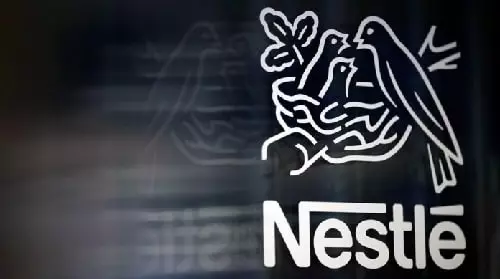As of early 2025, Nestlé India has experienced mixed financial performance. In the quarter ending December 31, 2024, the company reported a net profit of ₹6.96 billion, a 6.2% increase from the previous year, but below market expectations due to subdued urban demand and elevated product prices.
Strategically, Nestlé India is focusing on innovation and marketing to drive growth. The company plans to increase advertising and marketing expenditure to 9% of total sales by 2025, aiming to strengthen brand presence and consumer engagement.
In leadership developments, Manish Tiwary, former head of Amazon India, has been nominated to succeed Suresh Narayanan as Managing Director, effective July 30, 2025. This appointment is anticipated to bring fresh perspectives to the company’s operations.
Despite challenges such as higher input costs and competitive pressures, Nestlé India remains committed to leveraging its strong brand portfolio and strategic initiatives to navigate the evolving market landscape this page contains the detailed SWOT Analysis of Nestlé India, so let’s move ahead.
Strengths
- Strong Brand Portfolio: Nestlé India boasts a robust lineup of well-established brands, including Maggi, Nescafé, and KitKat, which enjoy high consumer trust and loyalty. This brand equity facilitates market penetration and sustains competitive advantage.
- Extensive Distribution Network: The company has developed a comprehensive distribution system, ensuring its products are available across urban and rural markets. This widespread reach enables Nestlé India to cater to a diverse consumer base effectively.
- Commitment to Quality and Innovation: Nestlé India’s focus on maintaining high-quality standards and continuous product innovation has helped in adapting to changing consumer preferences, thereby sustaining its market relevance.

Weaknesses
- Recent Financial Performance Challenges: In the quarter ending September 30, 2024, Nestlé India reported a 9% decline in profit before tax, amounting to ₹10.21 billion. This downturn was attributed to increased ingredient costs and subdued demand for packaged food products.
- Stock Market Underperformance: As of January 16, 2025, Nestlé India’s shares closed at ₹2,172.9, marking a 14.56% decline over the past year. This performance lagged behind the NIFTY index, which saw an 8.09% rise in the same period.
- Leadership Transition: The nomination of Manish Tiwary, former head of Amazon India, as the new Managing Director, following Suresh Narayanan’s retirement, introduces a period of leadership transition. While Tiwary’s extensive experience is promising, such changes can pose integration challenges.
Opportunities
- Product Reformulation and Health Trends: Responding to consumer health consciousness, Nestlé India is reformulating its Cerelac baby food variants to eliminate refined sugar. This initiative aligns with the growing demand for healthier products and can enhance brand perception.
- Digital Transformation and E-commerce Expansion: Leveraging digital platforms for marketing and sales can enhance consumer engagement and drive growth. The increasing trend of online shopping presents an opportunity for Nestlé India to strengthen its e-commerce presence.
- Rural Market Penetration: With urban markets experiencing saturation, expanding into rural areas offers a significant growth avenue. Tailoring products to meet rural consumer needs can help capture this emerging market segment.
Threats
- Inflationary Pressures and Consumer Spending: Persistent high inflation, particularly in food prices, has led India’s middle class to reduce discretionary spending. This trend poses a risk to Nestlé India’s sales, especially for premium products.
- Intensifying Competition: The FMCG sector in India is highly competitive, with both established players and new entrants vying for market share. This competition can lead to pricing pressures and necessitate increased marketing expenditures.
- Regulatory Challenges: Changes in food safety regulations and taxation policies can impact operations. For instance, the suspension of Most Favored Nation status under the Double Taxation Avoidance Agreement between India and Switzerland affects Nestlé India, necessitating adjustments in financial planning.
Conclusion
In 2025, Nestlé India continues to leverage its strong brand portfolio and extensive distribution network to maintain its position in the FMCG sector. However, recent financial challenges and market underperformance highlight the need for strategic initiatives to drive growth. Opportunities in product innovation, digital transformation, and rural market expansion offer pathways for advancement. Conversely, threats from inflationary pressures, competition, and regulatory changes necessitate vigilant risk management. The leadership transition presents both potential and challenges, underscoring the importance of effective integration to steer the company toward sustained success.
Anantha Nageswaran is the chief editor and writer at TheBusinessBlaze.com. He specialises in business, finance, insurance, loan investment topics. With a strong background in business-finance and a passion for demystifying complex concepts, Anantha brings a unique perspective to his writing.


